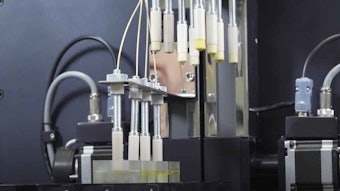
*Adapted with permission from Do, L. and Maibach, H.I. (2018). Pharmacogenomics/updated for precision medicine in dermatology. J Dermatological Treatment 30(4).
For the complete article, click through to the Nov./Dec. 2019 digital magazine.
Over decades, we have reviewed, with patients and consumers, few to dozens of cosmetics and skin care products they have discarded either due to a suspected allergy or because the products were believed to not be suitable for their skin, based either on intolerance and/or lack of efficacy. This ambiguity encourages the development of tools to assist in product personalization, which has thrived among cosmetic companies.
With no-expertise-required diagnostic and non-invasive devices, cosmetic brands train technicians to assess customers' skin and/or hair, which then provides a measurement to aid in product selection.
Some models can connect to the internet and transfer data back to companies' servers. One that is widely used is Unilever's Dove brand Advanced Diagnostic Instrument (DADI), which uses hair-on-hair friction to instantly measure surface damage.1 The technician then uses the damage score to advise on a product regime. Eventually, the device uploads the consumer’s hair damage scores along with demographic information, which provides extensive data for further analysis.
Another popular device is Nuskin's Pharmanex BioPhotonic Scanner (PBPS), which measures carotenoid levels at the skin’s surface using optical signals.2 By placing the palm of a customer's hand in front of the scanner's low-energy blue light, a reading is obtained of the carotenoid antioxidant levels, which helps to recommend a care regime. Like DADI, PBPS can also send customers' data back to Nuskin's database.
Despite their convenience and popularity, however, these devices lack clinically published follow-up data with well-controlled evidence on their reliability; companies’ financial interests may make them even contentious. Importantly, these devices still cannot predict potential adverse events.
‘Typing’ Consumers
While phenotypes such as hair and skin condition may be acceptable for suggesting short-term products, they cannot predict a suspected allergy or the long-term efficacy for an individual.
Continue reading in the Nov./Dec. 2019 digital magazine...











